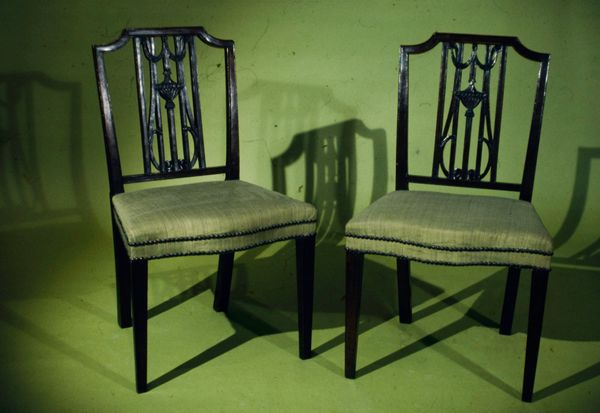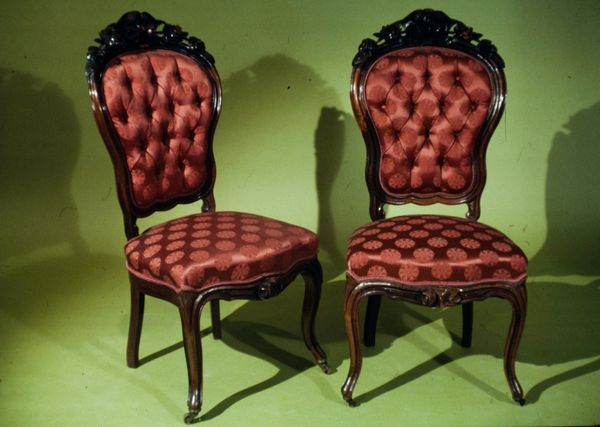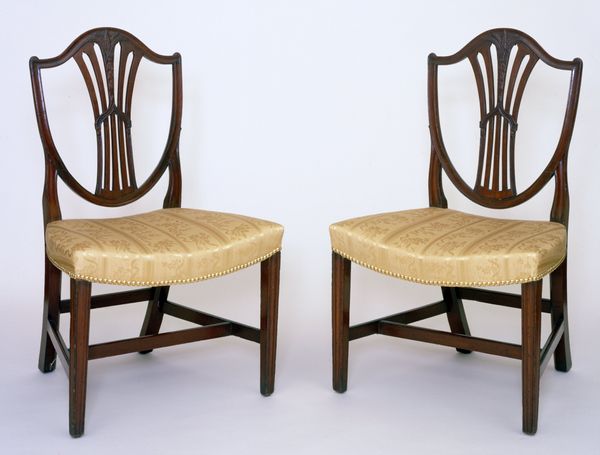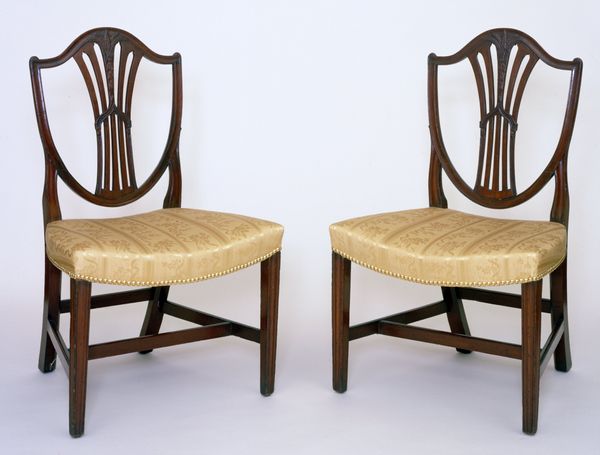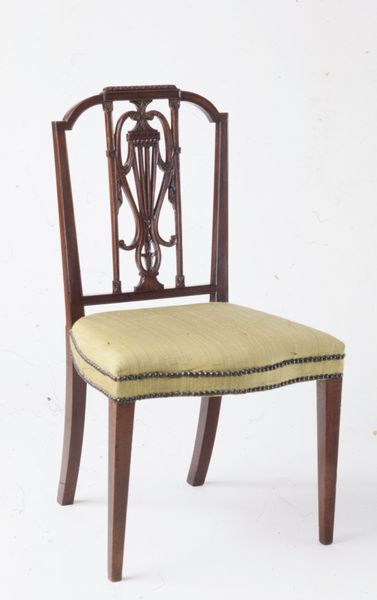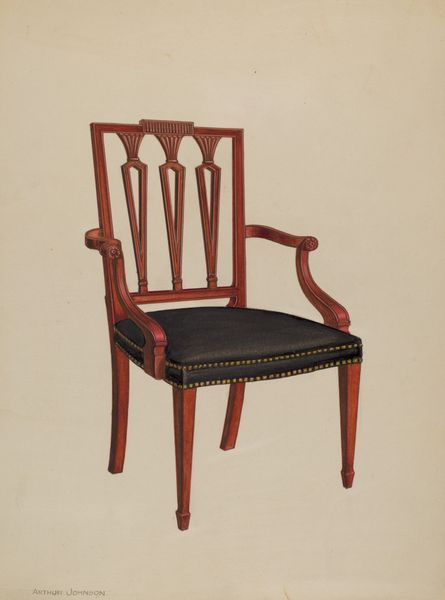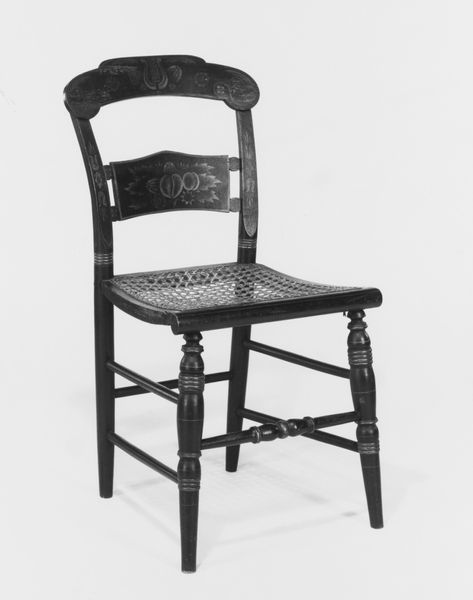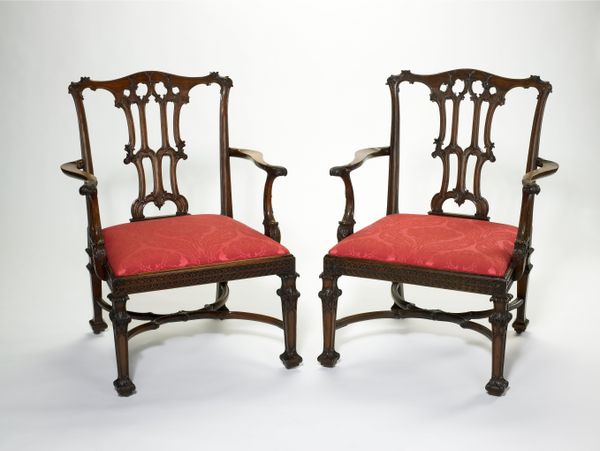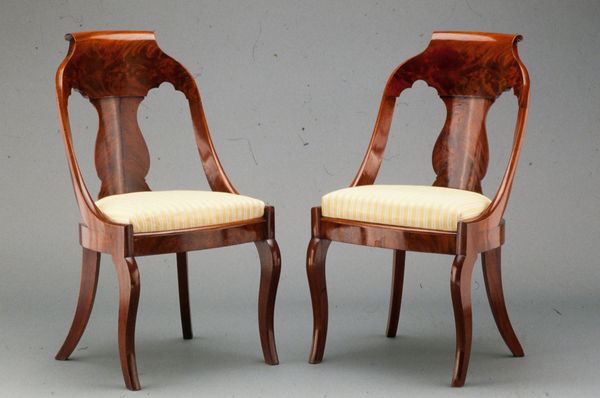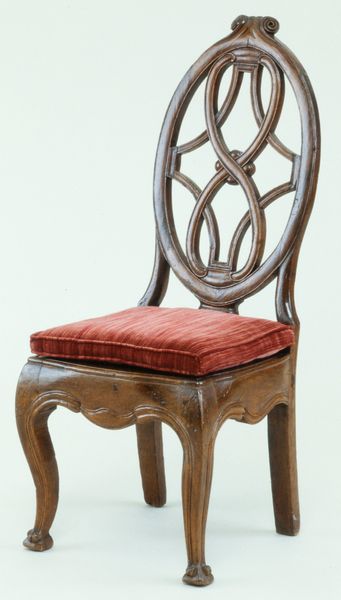
wood
#
furniture
#
united-states
#
wood
#
decorative-art
Dimensions: 36 3/4 x 20 1/2 x 17 1/2 in. (93.35 x 52.07 x 44.45 cm)
Copyright: Public Domain
Curator: This is a Racket-back Sheraton side chair, made around 1800, now residing here at the Minneapolis Institute of Art. Editor: Ooh, sleek! My first thought is how confidently upright it stands. There’s something almost severe about it, despite the decorative flourishes. Curator: That severity comes from the Neoclassical lines so popular in late 18th-century American decorative arts. Think of it as a formal counterpoint to the fussier styles of the mid-century. Observe how the “racket-back,” gets its name, mirroring the shape of a tennis racket. Editor: Right, like a deconstructed lyre! And that palmette motif... it’s used so often, isn't it? It must symbolize something powerful? Curator: The palmette, originating in ancient Egypt, symbolizes rebirth and growth. It was favored for its formal symmetry and its evocation of classical ideals, linking the young American republic to those long-established principles. Consider its psychological impact; it was thought to instill virtues associated with those ideals—wisdom, order, and endurance. Editor: An everyday object imbued with symbolic weight... So it’s not just a chair. It’s making a statement, a silent sermon in wood! Who made this chair? Curator: The maker remains anonymous. While we can’t name a specific craftsman, the chair itself serves as a cultural artifact, representing the aspirations and values of its time. Its very design suggests it would have been placed in a room of status, signaling both taste and refinement. Editor: I like that…anonymous, yet so expressive. It carries the collective ideals, you know, almost unconsciously. Curator: Precisely. It demonstrates how objects are so much more than what they appear; they can embody cultural narratives and memories far exceeding their simple physical presence. Editor: Gives one a lot to consider simply before sitting down, eh? Curator: Indeed. Thanks to objects like these chairs we can ponder and preserve the nuances of human identity through time.
Comments
No comments
Be the first to comment and join the conversation on the ultimate creative platform.
